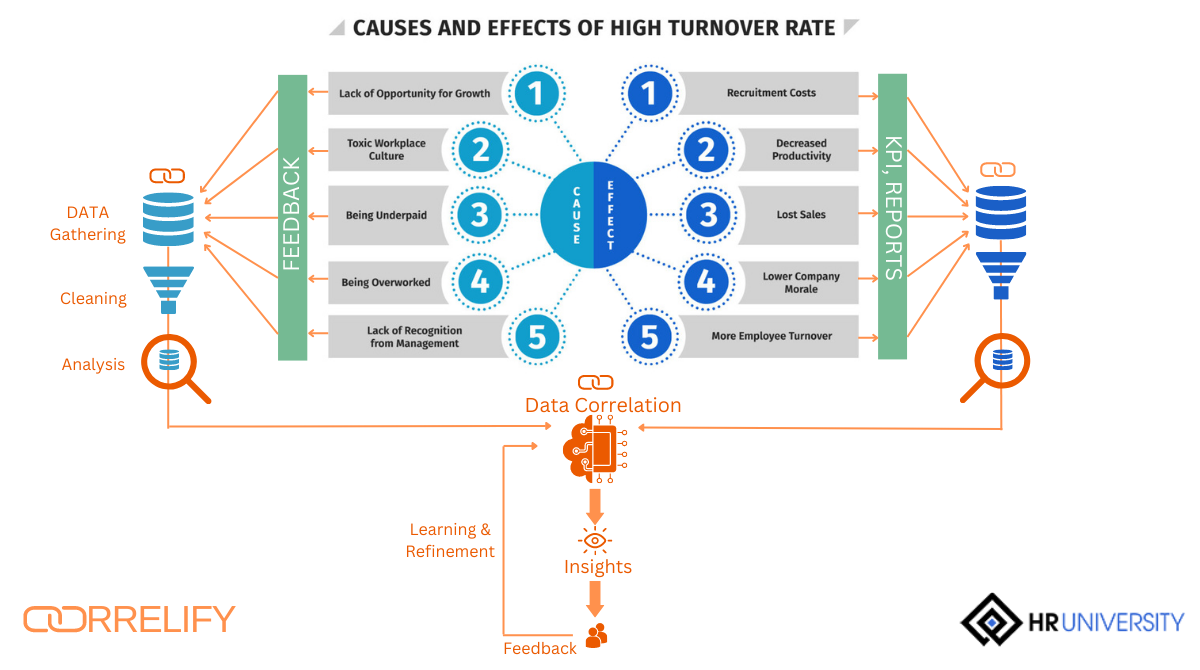Why employee turnover matters?
One of the major problems companies face is employee turnover. Losing an employee can negatively impact a business in many ways, including disrupting workflow. Whereas some employee turnover is understandable, such as employees leaving for personal reasons or to pursue other interests, a high turnover rate can signal issues within the company. From recruiting to hiring to training, there is a lot of time and money invested. But the impact doesn't stop there. We will explore why employee turnover matters and how a company can be affected.
New employees have a high turnover rate. Approximately 25% of new employees leave their jobs within the first year. This can cost important amounts of money for a company, as it's more expensive to replace employees in the first year.
The cost of losing an employee can be as much as twice their annual salary. Senior executives, and CEOs, are the most expensive ones to replace.
Employees who can work remotely are less likely to leave their company.
What causes employee turnover.
There are numerous reasons why employees leave a job. When they feel like they have reached a plateau where there are no opportunities to grow and nothing new can be learned, they are likely to look for another company to develop new skills, gain status, and improve their income. However, some employees may be content with this situation if they are compensated well enough and able to relax. But, that's not always the case; being underpaid is also a motivation for leaving.
A significant factor in employee turnover is a toxic workplace that can force anyone to leave the organization and seek new employment. Therefore, it's essential to create a positive culture and a healthy environment in which everyone is satisfied. This transformation needs to be taken seriously and implemented by senior leadership, not just communicated to lower levels. Even worse, when employees aren't appreciated and recognized for their work, sometimes under pressure with a heavy workload, they will feel underappreciated and less engaged, leading them to quit.
What are the consequences of high employee turnover?
When employees stay in their company for longer periods, they gain expertise in their roles, develop into high-quality workers, and become more productive. Long-term employees have more opportunities to build trusting and positive customer relationships, leading to better customer service and repeat business.
However, when they leave, hiring and training a replacement costs money and time. It takes months for new employees to become proficient, resulting in decreased productivity and impacting the productivity of their colleagues. It undermines the morale of the rest of the employees and as a result, companies lose out on revenue.
When an employee quits, those who stay begin to question the company, feel overworked and take on extra responsibilities to cover the excess work, creating a stressful environment and leading to additional turnovers. The organization often faces a vicious cycle in which employee turnover can contribute to even more turnover, even if they leave for reasons that have nothing to do with the workplace.
A high turnover rate of employees can be bad for business, making it difficult to attract talented people. These days, a company's reputation can be tarnished by negative word-of-mouth on social media and review websites. Negative feedback, such as bad reviews and critical comments, will be a red flag for a potential employee.
Indeed, a high turnover can heavily impact a company.
How Correlify reduces causes to prevent consequences.

Keeping track of employee turnover is crucial. If you've noticed an increase in turnover, it's time to analyze the reasons and consider new strategies to improve employee retention. It is essential for companies to understand what causes turnover and how it can be reduced to optimize the company's health and keep its workforce engaged.
We collect data from different sources, whether it's raw data from text files, feedback from staff and managers, or data from existing HR platforms. These data are consolidated and sorted to identify potential causes or existing consequences. Then, we use Machine Learning (ML) / Artificial Intelligence (AI) to analyze the data and correlate causes and consequences. Finally, we determine the best approach for managers to decide on the right strategy to compose and organize teams, ensuring each employee is the right fit and creating an ecosystem for growth. Our system also accepts additional feedback, which is used to continually analyze and refine the insights and suggestions.
Correlify integrates effective systems to help you understand and reduce employee turnover and avoid the five major causes of high employee turnover.
References: https://hr.university/analytics/how-to-calculate-employee-turnover-rate/






